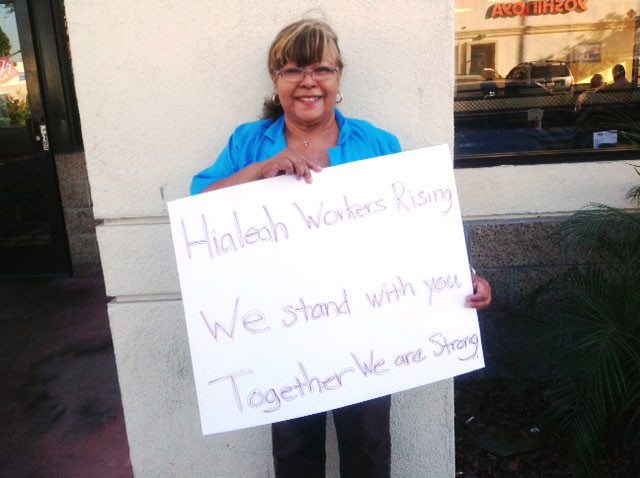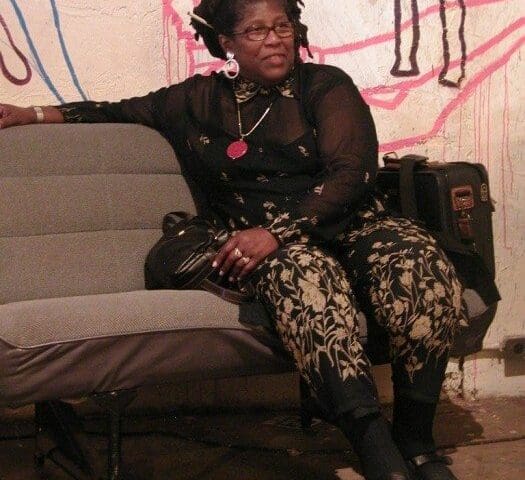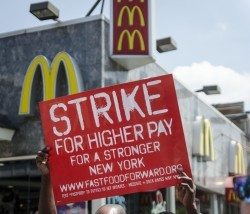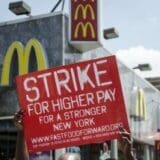LATEST NEWS


Last week Los Angeles County Children’s Social Workers went on strike after contract talks with the county broke down. At the heart of the conflict are claims made by the CSWs that the Department of Public Social Services and the L.A. County Board of Supervisors have refused to include in a new labor agreement a binding commitment to reduce the number of employee caseloads. The CSWs, represented by the Service Employees International Union Local 721, say the caseload numbers “greatly exceed acceptable industry standards.”
This morning at 11 a.m., union members, along with community and faith leaders, will take their complaints to field offices of the five supervisors: Gloria Molina, Zev Yaroslavsky, Don Knabe, Mark Ridley-Thomas and Mike Antonovich. The chief focus of Monday’s strike rallies will be Molina’s El Monte office, at 3400 Aerojet Avenue.
Local 721 claims the support of U.S. Congresswomen Janice Hahn and Judy Chu,


November, 2013 was not a good month to be a Walmart corporate executive.
The headaches for the nation’s largest employer of low-wage workers began November 18, when the National Labor Relations Board found that Walmart illegally threatened, disciplined and fired employees over last year’s Black Friday strikes and protests. The finding was the first step in an NLRB complaint asserting that the retail giant violated workers’ rights.
The Black Friday protests have been a driving force behind the core demand by Walmart employees that the company raise the annual earnings for sales associates above the federal poverty line.
That NLRB bombshell soon snowballed into a public relations disaster when, on the same day, news broke that a Canton, Ohio Walmart store had instituted a Thanksgiving food drive on behalf of store employees unable to afford a holiday meal. The Canton story was subsequently credited with reigniting the congressional fight for the first increase in the national $7.25-per-hour minimum wage since 2007.


Thursday’s one-day strike by fast-food workers may have received relatively little media coverage, but the doubling of strike sites to 100 cities over the previous nationwide actions showed the movement for higher wages and union recognition is growing.
The largest actions were held in New York City and Chicago, where, according to the Guardian UK, “hundreds of protesters gathered outside a McDonald’s at 6:15 a.m. as a large ‘Christmas Grinch’ ambled about in freezing temperatures.”
According to the Seattle Times, about 150 demonstrators rallied at City Hall following an all-day march in icy weather from neighboring SeaTac. In Los Angeles, rallies were held at dawn in South Los Angeles at a Manchester Boulevard McDonald’s, as well as a Sunset Boulevard McDonald’s in Silver Lake, at noon. The movement for fast-food employee rights has the twin goals of raising starting salaries to $15 an hour (at present they typically begin at $7.25) and to win the right to organize workers into unions.
» Read more about: Fast-Food Workers Movement Pushes Ahead »


Over the past week, since Wanda Coleman’s untimely death at 67, admirers have been remembering her formidable body of work, her electrifying readings – and her identification with the city she called her home. Growing up in Watts in the 1950s, she experienced not only discrimination but also taunts by other black children because of her dark skin and untamable hair—which she describes in Bathwater Wine as “threads within coils within knots within twists.”
As a child, she took refuge in books, although not necessarily in libraries. (One poem describes a white librarian policing her through the stacks.) Her love of language sustained Coleman through her struggles to earn a living as a single mother, to cope with the death of a son and her own ill health. She did not choose an easy path. Furthermore, the West Coast is a hard place for any poet to make her name.
But Los Angeles gave Coleman a vocabulary and a landscape that she in turn made her own.
» Read more about: can’t let go of it: Appreciating Wanda Coleman »


Driving past Echo Park the other day I saw a cat convulsing in the road. It had plainly been hit by a car and was, hopefully, near death. I considered backing up and driving over the poor thing to end its misery, but I didn’t have the strength.
Francis Underwood, played by Kevin Spacey, finds himself in a similar situation in the opening scene of the Netflix series, House of Cards. He strangles a wounded creature (a dog) as he tells us there are two kinds of pain—that which makes you stronger and that which has no purpose and is thus just suffering.
Read Mark Fainaru-Wada and Steve Fainaru’s League of Denial and I promise you’ll be convinced there’s a third, perhaps more complicated category—suffering whose purpose is collective pleasure, incriminating participant and observer simultaneously.
The risks of repeated blows to the head are obvious and have been known for some time.


While growing up an American Catholic, I learned to tune out the Vatican, which had the air of Old World irrelevancy. The pope, I thought, was just the Catholic Church’s version of Queen Elizabeth, some doddering old monarch with no real power. The uncharismatic Pope Paul VI was a case in point, a kind of Millard Fillmore of the papacy. But instead of some dude with a bad 19th century haircut embroiled in states’ rights debates, this was an old Italian guy in a white dress. Same difference. But what did it have to do with my world?
Well, plenty as it turned out, for my boyhood coincided with the implementation of Pope John XXIII’s Vatican II reforms, which did in fact alter my world—in important ways. For a 9-year-old those important changes included permission to wear sneakers and T-shirts into church, the folk mass, no Latin classes — and an interesting lesson in architecture as the new circular churches that began to appear were more like theater in the round vs.
» Read more about: Pope Francis: Is God Actually in the House? »


In 2011, the University of California, Berkeley Center for Labor Research and Education put out a study that should have sparked mass rallies up and down the Golden State. The report found that nearly half of California workers will retire in or near poverty. In other words, a state once synonymous with the American Dream of economic opportunity and security is on a path to become a purgatory for millions of seniors.
It’s hard to square this alarming fact with the revelation last month that a group of mostly ultra-conservative electeds and activists will try to place a statewide measure on the 2014 ballot that would slash the pensions of government workers. The group, headed by San Jose Mayor Chuck Reed, includes Texas billionaire John Arnold, who has made “pension reform” a personal crusade.
The initiative would not only cut the retirement benefits of future public sector workers,
» Read more about: What State Pension Slashers Really Want »


Following on the heels of last week’s Black Friday protests at Walmart stores, American fast-food workers plan one-day strikes in 100 cities Thursday. The figure represents a doubling of last year’s actions.
In addition, according to the New York Times’ Steven Greenhouse, demonstrations are planned for another 100 cities. On Sunday Greenhouse wrote:
The movement, which includes the groups Fast Food Forward and Fight for 15, is part of a growing union-backed effort by low-paid workers — including many Walmart workers and workers for federal contractors — that seeks to focus attention on what the groups say are inadequate wages.
The fast-food effort is backed by the Service Employees International Union and is also demanding that restaurants allow workers to unionize without the threat of retaliation.
Much of the fast-food strikes’ focus will be on pushing state minimum wages to $15 per hour.
» Read more about: Workers to Super-Size Fast-Food Strikes Thursday »


(This article was reported in partnership with the Investigative Fund of the Nation Institute. It first appeared on The Nation’s website and is republished with permission.)
The call from the temp agency comes in late October. I’ve passed the drug test, cleared the background check, sat down for a quick interview—“Can you lift fifty-pound boxes?”—and completed a worksheet of basic math problems. Now there’s a job. A warehouse just outside the city of Ontario, about forty miles east of Los Angeles, needs more bodies to meet the holiday crush.
They do work for Walmart, Best Buy, “all sorts of big companies,” says the female voice on the line. Orientation starts at 8:15 am; pay is $9 an hour. “Make sure you’re early.” Before hanging up she repeats the order. “Be early.”
On an overcast Tuesday, I pull into the parking lot,
» Read more about: Eyewitness: Working Inside an Inland Empire Warehouse »


Bursting out of ourselves,
rush of coat and elbow,
we rode over, over
Jimmy Damour, standing guard in the dawn —
the door yanked from its socket.
We rode as though on horseback
in the direction of our wanting.
They say you lay in a sleep of bronze
on the white linoleum,
while we shopped for TVs.
You a stone in the current of us.
Like water, indifferent, serpentine,
we carved the earth,
with our urgent business.
They say you shielded a pregnant woman
with your body,
that beneath the weight of us
she heard the grinding of her own teeth.
I’d like to say that because of you, Jimmy,
we make do with less.
It would suit my miserly heart
to cut, extract, leave out, whittle
down to the essential quart
of milk and sack of beans
to sit hearthside with this set of hands,


For a list of Black Friday actions planned nearest you, go to https://blackfridayprotests.org/
» Read more about: Walmart Braces for Black Friday Protests Today »


» Read more about: Happy Thanksgiving — Eat (Not Shop) Till You Drop! »
On the face of it, a report that Walmart has yet to cough up the $7,000 fine it owes the government over an infamous 2008 Black Friday tragedy should be shocking. In fact, Walmart is not simply behind in its payment, it is actively fighting the fine. The incident in question took place when Jdimytai Damour, a store employee at a Long Island Walmart, died during a shopper stampede – a literal “doorbuster” – during which hundreds of people poured through the store’s unhinged glass doors before the dawn of the morning after Thanksgiving.
“Should be shocking,” because somehow we’ve become so used to hearing about the retail giant’s outlandish and dangerous obsession with profits that such news doesn’t surprise many people. Writing in the Huffington Post, Dave Jamieson noted:
For a company with sales of $466 billion last fiscal year, the $7,000 fine from the Occupational Safety and Health Administration represents little more than a single store’s rounding error.


This Friday, the busiest shopping day of the year, tens of millions of Americans will travel to Walmart stores to look for holiday discounts on computers, toys and cell phones as well as to buy groceries and basic household items. But at more than 1,500 of Walmart’s 4,000 stores, shoppers will be greeted by Walmart employees handing out leaflets and holding picket signs — “Walmart: Stop Bullying, Stop Firing, Start Paying” and “We’re Drawing a Line at the Poverty Line: $25,000/year” — protesting the company’s abusive labor practices, including poverty-level wages, stingy benefits and irregular work schedules that make it impossible for their families to make ends meet.
The Black Friday rallies and demonstrations represent a dramatic escalation of the growing protest movement among employees of America’s largest private employer. But they also represent the vanguard of a sharp challenge to the nation’s widening economic divide and the declining standard of living among the majority of Americans.
Happy Union Thanksgiving!
The Meal of the Year is here! This is family time, and in the labor movement we know all about the importance of family. The crazy fun of Black Friday follows, so don’t forget to buy union made when you can. And while some stores want to open on Thanksgiving Day this year, we say family, friends and those we care about are worth more than a few extra hours of shopping.
We’ve put together a Thanksgiving shopping list for a great union-made spread. And we realize it can sometimes be difficult to find union made for everything on your list, so another great way to go union is to patronize union grocery stores. So enjoy the day! And we’ve got one more recipe — for stout cake — that you’re going to want to add to the table this year in our Product Spotlight below.


A recent Los Angeles Times editorial succinctly spelled out the simple truth about a potentially major labor case now before the U.S. Supreme Court. In Unite Here Local 355 v. Mulhall, a hospitality union is seeking to overturn a lower court decision favoring a supposedly disgruntled worker whose case just happened to be taken up by the National Right to Work Legal Defense Foundation.
The case’s backstory is a somewhat complicated tale involving a Florida union local’s attempt to organize workers employed by the operator of a casino and race track. That operator, Mardis Gras Gaming, accepted a “neutrality agreement” with UNITE HERE, in order to give the union access to Mardis Gras’ workers without management objections. The arrangement also allowed for what’s called a card-check election, which is often used to simplify union elections at businesses.
But one Mardis Gras employee,
» Read more about: Supreme Court Considers an Important Labor Case »


Having failed to defeat the Affordable Care Act in Congress, to beat it back in the last election, to repeal it despite more than 80 votes in the House, to stop it in the federal courts, to get enough votes in the Supreme Court to overrule it and to gut it with outright extortion (closing the government and threatening to default on the nation’s debts unless it was repealed), Republicans are now down to their last ploy.
They are hell-bent on destroying the Affordable Care Act in Americans’ minds.
A document circulating among House Republicans (reported by the New York Times) instructs them to repeat the following themes and stories continuously: “Because of Obamacare, I Lost My Insurance.” “Obamacare Increases Health Care Costs.” “The Exchanges May Not Be Secure, Putting Personal Information at Risk.”
Every Republican in Washington has been programmed to use the word “disaster” whenever mentioning the Act,
» Read more about: Obamacare Smears Can’t Hide Three Major Truths »


So an Ohio Walmart started a food drive among its employees to help its lower income workers get a decent Thanksgiving. “Please Donate Food Items Here so Associates in Need Can Enjoy Thanksgiving Dinner,” reads a sign in the clerk’s break room. Someone snapped a photo on their cell phone, put it on-line and it went viral. The image underscores what Walmart itself knows: One million of its employees earn less than $25,000 dollars a year – impossible to live on in Ohio, much less Los Angeles, where an average apartment rents for $1,480 a month.
But did you know that L.A. County also leads the nation in “food insecurity”? That’s the current euphemism that means people are likely to go hungry. A national network of food banks estimated that 650,000 children in our county risk going without enough to eat. These are kids who live with parents or guardians who cannot afford a balanced meal or who skip dinner themselves to feed their children.


The twin harbors at the Ports of Los Angeles and Long Beach handle 40 percent of the nation’s imported cargo and generate some of the best middle-class jobs in Southern California. And yet it would be a serious mistake to believe that all who work in the transportation of goods share in the bounty provided by port traffic.
Writing in today’s Los Angeles Times, Congresswoman Janice Hahn notes that “many of the truck drivers who serve the ports find themselves stuck at the bottom of the economic ladder because of the way their employers classify and exploit them.”
The drivers Hahn speaks of are mostly immigrant workers employed by companies who label them as “independent contracts” — a ploy that enables the companies to deduct their own trucking-related business expenses from their drivers’ wages. Hahn recalls speaking to drivers who have told her that, under this system,
» Read more about: Janice Hahn: Port Drivers Must Be Treated Fairly »


A recent Los Angeles Times editorial succinctly spelled out the simple truth about a potentially major labor case now before the U.S. Supreme Court. In Unite Here Local 355 v. Mulhall, a hospitality union is seeking to overturn a lower court decision favoring a supposedly disgruntled worker whose case just happened to be taken up by the National Right to Work Legal Defense Foundation.
The case’s backstory is a somewhat complicated tale involving a Florida union local’s attempt to organize workers employed by the operator of a casino and race track. That operator, Mardis Gras Gaming, accepted a “neutrality agreement” with UNITE HERE, in order to give the union access to Mardis Gras’ workers without management objections. The arrangement also allowed for what’s called a card-check election, which is often used to simplify union elections at businesses.
But one Mardis Gras employee,
» Read more about: Supreme Court Considers an Important Labor Case »